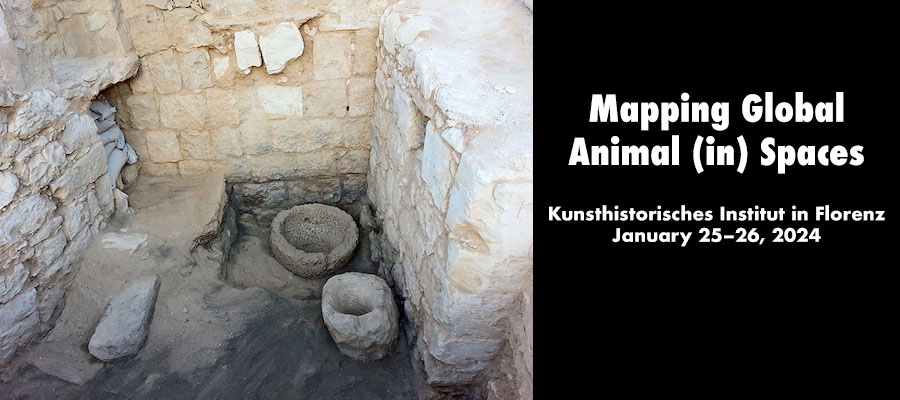Mapping Global Animal (in) Spaces, Kunsthistorisches Institut in Florenz – Max-Planck-Institut and Zoom, January 25–26, 2024
Human-animal interactions occur in specific spatial settings. Animals are often perceived as ‘victims’ of human dominance; they are and have been affected spatially by various human interventions including migration, agricultural exploitation, war, trade, geographical exploration, scientific expeditions, imperialism, and colonialism. But, our ‘silent (or not so silent) neighbors’ do not merely surround us; they too are migrants as well as active producers of space and built environments. Much as human beings migrate, create, and shape the space around them, animals create dwellings as natural spectacles, form and transform natural (and urban) landscapes, and interact with humans in space through resistance, co-habitation, and (re-)occupation. While artificial environments may relocate the nonhumans from ‘wilderness’ to ‘civilized’ enclosures, at the same time humans benefit from spaces created by animals.
Moving beyond narratives of subordination and oppression, this interdisciplinary workshop aims to foster a critical debate by exploring spaces that create significant interspaces of tension and confrontation, but also conciliation and coexistence (sometimes even mutual dependence), between humans and nonhumans. Particular attention will be given to artistic practices and architecture and to their relations to ecological, anthropological, historiographical, and methodological debates. We are eager to understand how animal spaces have been observed, documented, perceived, and imitated in a global horizon. Furthermore, the workshop questions what impact these practices (and therefore the agency of animals) had or have on human space and what future perspectives regarding built and shaped environments are.
Proposals may address, but also go beyond, the following topics:
- animals as architects (bees, beavers, birds, rabbits, termites, coral-built reefs, etc.)
- designed animal territories or animals in zones of conflicts and tension
- animal habitats/territories occupied by humans
- built environments for animals (breeding stations, farms, slaughterhouses, aviaries, menageries, colosseums, zoos, laboratories, etc.)
- spaces and built environments for, decorated with, or created by the animal body (muse-um architecture: display modes vs. archival storage, trophy rooms, furniture made from animal bodies, etc.)
- Building materials (dung brick etc.) and material ecologies (cf. Neri Oxman)
- architecture inspired by animal spaces (such as the Beijing National Stadium, also known as the “Birds’ Nest”)
- Depictions of animals in landscape/animals and plants, such as Flemish landscape paintings; the ‘Pasture beech’ as an animal-shaped tree
The workshop, organized by Christine Kleiter (KHI–MPI/Universität Göttingen), Lianming Wang (City University of Hong Kong), and Gerhard Wolf (KHI–MPI) will take place on 25 – 26 January in Florence both on-site and via Zoom. We welcome proposals, preferably from early career researchers from all disciplines. Presentations in German, English, Italian should be of max. 30 minutes.
